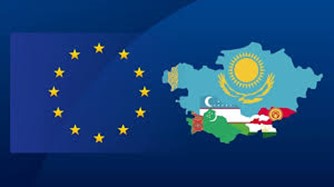
On April 3-4, the first-ever summit meeting between the EU and Central Asian countries will take place in Samarkand. This landmark event will open a new page in relations between the regions, marking a transition to a qualitatively new level of multilateral cooperation.
Since the emergence of newly independent states in Central Asia, the EU has been working to establish bilateral partnerships with them. Since 1991, the development of the EU’s strategy in Central Asia has gone through several important stages, which were driven by changes in the system of international relations, the dynamics of European integration, and the role of Central Asia in global politics.
The first large-scale program of cooperation was the Technical Assistance to the Commonwealth of Independent States (TACIS, 1991-2006), which supported the countries of the region in political and economic reforms, transition to a market economy and strengthening the rule of law. More than 3,000 projects were implemented under this initiative, totaling more than €7 billion. The key achievement of TACIS was the conclusion of Partnership and Cooperation Agreements with the countries of Central Asia.
Another important milestone was the adoption of the first EU Strategy for Central Asia in 2007. This period was marked by the beginning of the perception of Central Asia as a single region. A mechanism of annual meetings at the level of foreign ministers was created.
The policy of neighborhood and regional partnership implemented by the Republic of Uzbekistan under the leadership of President Mirziyoyev made a significant contribution to the rethinking of the strategy. As a result of joint efforts, a completely new political atmosphere has emerged in Central Asia. In a few years, many problems that had been accumulating for decades were resolved. As a result, the region is becoming a space for mutually beneficial cooperation and sustainable development.
In other words, Central Asia is no longer just a bridge between the East and the West, as it was traditionally perceived, but an independent actor in international relations.
Central Asian states are interested in attracting European investments, technologies and innovations for sustainable development. The EU is actively cooperating with the regions in politics, security, trade, investment, and cultural and humanitarian relations, strengthening the legal framework for cooperation. Kazakhstan and Kyrgyzstan have already signed partnership agreements with the EU, and Turkmenistan, Tajikistan, and Uzbekistan are preparing to sign theirs. In October 2023, a Joint Roadmap was adopted to deepen ties between the EU and Central Asia.
In recent years, Brussels has been building relations with five Central Asian states under Comprehensive Partnership and Cooperation Agreements. To date, Kazakhstan and Kyrgyzstan have already signed such agreements with the EU. In March 2024, Turkmenistan signed a protocol to the Agreement, and Tajikistan and Uzbekistan are finalizing preparations for signing the document.
An additional impetus to the development of cooperation was given by the adoption in October 2023 of the Joint Roadmap for Deepening Ties between the EU and Central Asia.
The European Union remains the largest investor in Central Asia, accounting for more than 40% of foreign direct investment over the past ten years (over €100 billion).
One of the areas of strategic partnership is the development and processing of mineral resources. In the context of diversification of supplies of critical materials, Central Asian countries are playing an increasingly important role in the global market. The signed Memoranda of Understanding with Kazakhstan (2022) and Uzbekistan (2024) allow European companies to intensify cooperation with the region’s countries in high-tech areas.
Among the infrastructure projects aimed at developing the region’s logistics potential, the China-Kyrgyzstan-Uzbekistan railway project plays a special role.
A new impetus to the development of cooperation was given by the results of the first investment and transport forum of Central Asia and the EU, held in January 2024 in Brussels. During the event, it was announced that 10 billion euros would be allocated to modernize the Trans-Caspian International Transport Route connecting Asia and Europe.
Another important area of partnership with the EU is the digital integration of Central Asia into the global economy. In March of this year, during the regional visit of EU Commissioner J. Sikela, the TEI Digital Connectivity project was launched to develop satellite communications, expand broadband Internet access, support digital innovation, and improve cybersecurity.
The fight against climate change and the transition to sustainable development remain a key aspect of cooperation, with the main initiatives being the SECCA project under the Team Europe strategy, the CAWEP Water and Energy Program, and Green Central Asia.
The EU remains not only an important trade, economic, and investment partner for the region, but also a key benchmark in the field of sustainable development, digital transformation, and environmental programs.